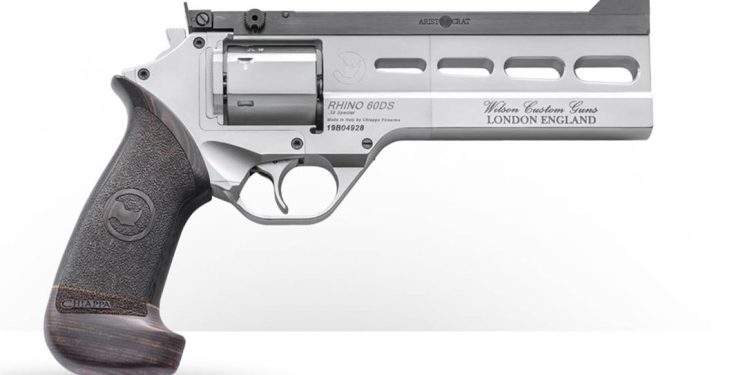The evolution of firearms is a testament to human ingenuity and the relentless pursuit of improvement in technology and performance. Among the various types of firearms, revolvers hold a unique place. Known for their reliability, simplicity, and iconic design, revolvers have been a staple in personal defense, law enforcement, and sport shooting for decades. However, with the advent of modern engineering and materials science, a new breed of revolvers is redefining firearm performance. Here we discuss the latest innovations in revolver technology, highlighting models and features that stand at the forefront of this renaissance.
Historical Context
The revolver’s history dates back to the early 19th century, with Samuel Colt’s patent in 1836 marking the birth of the modern revolver. The design was revolutionary, allowing the user to fire multiple rounds from a single firearm without the need to reload manually after each shot. This mechanism changed the landscape of firearm design and usage, setting the stage for future innovations.
Traditional Strengths and Limitations
Traditionally, revolvers have been lauded for their reliability. Their simple mechanism makes them less likely to jam or malfunction compared to semi-automatic pistols. Additionally, they are straightforward to use and maintain, making them accessible to a wide range of users. However, revolvers have also faced limitations, particularly in terms of capacity and rate of fire compared to their semi-automatic counterparts.
Modern Innovations
In recent years, manufacturers have embarked on a quest to overcome these limitations while enhancing the inherent strengths of revolvers. This section delves into the specific areas of innovation that are redefining revolver performance.
Materials and Weight Reduction
Modern revolvers are benefiting from the use of advanced materials. For instance, the use of titanium and aerospace-grade aluminum has led to significant weight reductions, making these firearms easier to carry and handle. This advancement is particularly beneficial for concealed carry and backcountry use, where weight and durability are paramount.
Ergonomics and Design
Ergonomic improvements have been a major focus in the design of new revolvers. Adjustable grips, better balance, and enhanced sights contribute to improved accuracy and user comfort. These design tweaks not only make the firearms more pleasant to shoot but also accessible to a wider range of users, including those with smaller hands or limited strength.
Increased Capacity and Caliber Options
Addressing one of the traditional limitations of revolvers, manufacturers have introduced models with increased capacities without significantly enlarging the frame size. Innovative design solutions, such as using higher-strength materials and re-engineering the cylinder and frame, have enabled these advancements. Additionally, the variety of calibers available in modern revolvers has expanded, offering users a wide range of options to suit their specific needs, from self-defense to hunting large game.
Precision Engineering
Advances in manufacturing technologies have allowed for tighter tolerances and improved mechanisms in revolver production. This precision engineering results in smoother action, a crisper trigger pull, and overall enhanced performance. These improvements contribute to the accuracy and reliability of modern revolvers, making them competitive with high-end semi-automatic pistols.
Notable Models Redefining Performance
Several models stand out in the modern revolver market, each showcasing the advancements that have been made in design, materials, and performance. For example, the Smith & Wesson Performance Center revolvers offer custom-tuned action, precision barrels, and specialized grips, catering to competitive shooters and enthusiasts seeking top-tier performance. Similarly, the Ruger Super GP100, designed specifically for competition shooting, features a robust design with an emphasis on accuracy and speed of reloading. Another groundbreaking model is the Rhino Revolver, known for its unconventional design that lowers the barrel’s position to align with the bottom chamber of the cylinder rather than the top. This innovative feature significantly reduces muzzle rise and recoil felt by the shooter, enhancing accuracy and control.
Future Directions
The future of revolver development appears promising, with ongoing research and innovation in materials science, ergonomics, and ballistic engineering. Smart technology integration, such as built-in laser sights and digital shot counters, may become more common, further enhancing the functionality and appeal of revolvers.
Moreover, environmental considerations are beginning to play a role in firearm manufacturing, with a push towards more sustainable materials and manufacturing processes. This shift could lead to the introduction of “green” revolvers, which use recycled materials and non-toxic finishes without compromising performance.
Conclusion:
The redefinition of firearm performance through modern revolvers is a testament to the blending of tradition with innovation. By addressing historical limitations and incorporating advanced technologies, manufacturers are ensuring that revolvers remain a relevant and valued choice for shooters around the world. As we look to the future, the potential for further advancements holds the promise of even more refined, reliable, and versatile revolvers, continuing their legacy as a cornerstone of firearm technology and culture.













